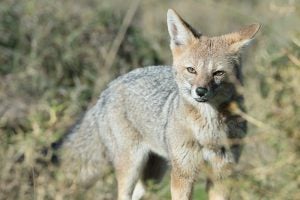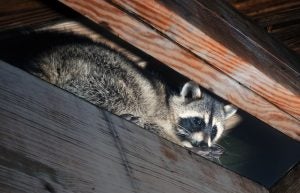You’ve vaccinated your dog, cat, and maybe your horses for rabies, but what about your raccoons? The U.S. Department of Agriculture has begun air-dropping rabies vaccines over 13 states this month to prevent a strain of the virus to reduce interstate spread. The oral vaccines are covered in fishmeal to attract raccoons and other wildlife that are at risk of contracting and spreading rabies.

Distributions began on August 6 as part of the USDA’s Animal and Plant Health Inspection Service’s annual RABORAL V-RG vaccination program. The oral vaccine bait is distributed in select areas of the eastern United States to prevent the spread of raccoon rabies into America’s heartland.
»Related: Op-ed: The importance of wildlife in ranching
The August phase of the program is primarily focused on Maine and West Virginia, with nearly 350,000 vaccines distributed in northern Maine and 535,000 in parts of western Pennsylvania, West Virginia, and southwestern Virginia.
Another 70,000 vaccines will be distributed in September and October to the peninsular areas of Michigan. Southern states will receive further distributions of more than 880,000 vaccines to North Carolina, Tennessee, and Virginia. An additional 820,000 vaccines will be distributed to Alabama, Georgia, South Carolina, and Tennessee. Finally, Alabama will receive another 1.1 million vaccines.

Don’t worry about Fido taking a bite. RABORAL V-RG has been deemed safe in more than 60 species of animals, including dogs and cats. Oral rabies vaccination has been in use in the U.S. since 1990, Canada since 1985, and Europe since 1980. While most states distribute bait for raccoons, Texas uses bait for gray fox and coyote.
When an animal finds a bait and bites into it, the sachet ruptures, allowing the animal to swallow the vaccine. Animals that swallow an adequate dose of the vaccine, develop immunity to rabies. As the number of vaccinated animals in the population increases, they act as a buffer to stop the spread of the disease to other wildlife, domestic animals, and people.

Rabies is one of the oldest known viral diseases, yet it remains a serious public health concern. While rabies is almost always fatal once symptoms appear, it also is 100% preventable. Human exposures can be successfully remedied if medical attention is sought immediately following exposure. Costs associated with rabies detection, prevention and control may exceed $500 million annually in the United States. According to the CDC, about 90 percent of reported rabies cases in the U.S. are in wildlife.


